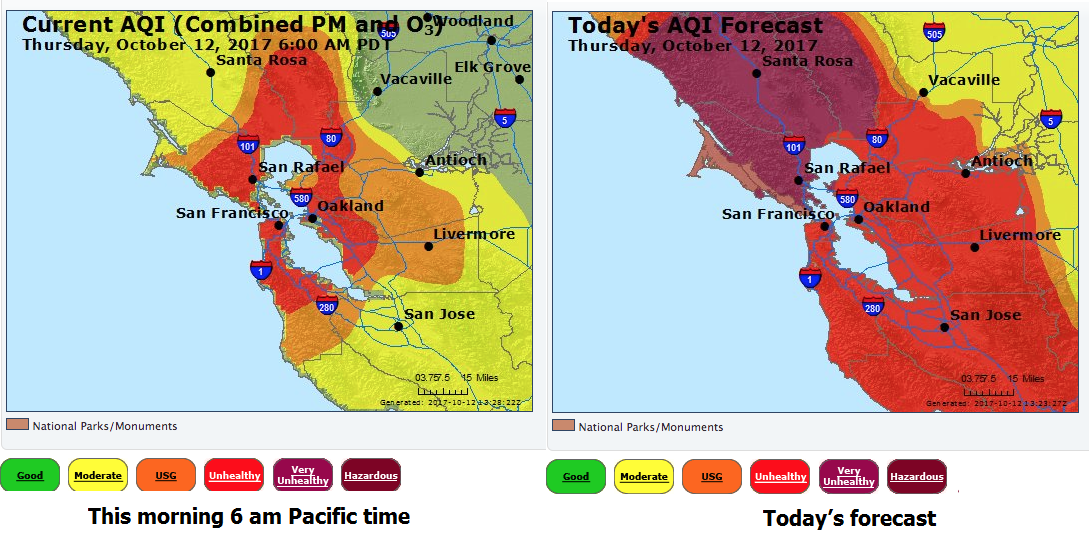
Submitted questions will be posted with my response by the following Tuesday or before.
Submitted comments will be moderated and approved within 24 hours.
What is Viscose?
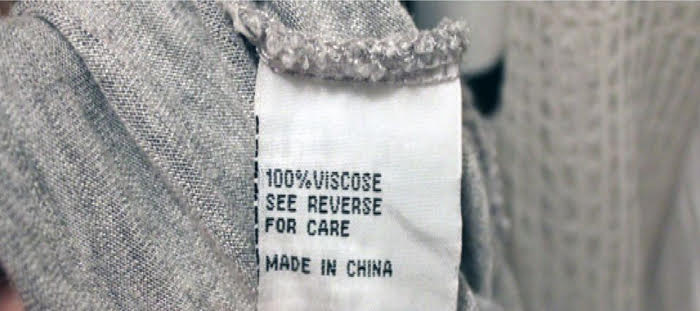
Question from Bonnie
Hi Debra,
What is viscose and is it somewhat safe to wear? I have found many t shirts made of this fabric and even bed sheets.
Debra’s Answer
Viscose is a brownish solution obtained by treating cellulose from plants with sodium hydroxide and carbon disulfide/ It is used to make rayon fiber and transparent cellulose film (cellophane).
The word is also used to refer to the rayon fabric or fiber made from viscose.
I think it is somewhat safe to wear. It’s a manmade industrial fiber. I occasionally buy a scarf made from viscose and once bought a dress-up dress made from it that I didn’t wear every day, but I wouldn’t sleep on viscose sheets every night.
FTC Takes Action Against Paint Companies for False Claims Regarding VOCs

Paint Companies Settle FTC Charges That They Misled Consumers; Claimed Products Are Emission- and VOC-free and Safe for Babies and other Sensitive Populations
Orders require companies to show paint emits no harmful chemicals at the time paint is applied when making unqualified zero-emission/zero-VOC Claims
Four paint companies have agreed to settle Federal Trade Commission charges that they deceptively promoted products as emission-free or containing zero volatile organic compounds (VOCs), including during and immediately after application. Some promotions also made explicit safety claims regarding babies, children, pregnant women, and other sensitive populations. However, the FTC alleged, the companies had no evidence to support these claims.
The four companies, Benjamin Moore & Co., Inc., ICP Construction Inc., YOLO Colorhouse, LLC, and Imperial Paints, LLC, have agreed to orders that would bar them from making unqualified emission-free and VOC-free claims unless, at all times during application and after, both content in and emissions from their paints are actually zero, or emissions are at “trace levels,” as defined in the orders.
The settlements also prohibit the companies from making other unsubstantiated health and environmental claims, and ensure that two of the companies disclose that seals appearing in their promotional materials are their own designations.
VOCs are carbon-containing compounds that easily evaporate at room temperatures. All paints emit chemicals during the painting process and while drying. Some of these chemicals can be harmful to the environment and people, especially to sensitive groups such as babies and those suffering from asthma or allergies.
In four separate complaints, the FTC charged each company with making unsubstantiated claims that their paints were free of emissions and/or that they contained no VOCs, without any qualification (e.g., after X number of hours). The FTC also charged the companies with facilitating deception by retailers who sold their paint. Additionally, in its complaints against Benjamin Moore and ICP Construction, the FTC alleged that the companies marketed their paint using environmental seals without disclosing to consumers that they had awarded the seal to their own products.
Each of the proposed consent orders settling the charges against Benjamin Moore & Co., Inc., Imperial Paints, LLC, YOLO Colorhouse, LLC, and ICP Construction Inc. contains four provisions designed to ensure the companies do not engage in similar conduct in the future.
First, they would prohibit the companies from making unqualified emission-free and VOC-free claims, unless both content and emissions are actually zero, or emissions are at trace levels, beginning at application and thereafter. The proposed orders’ definition of “trace level of emissions,” which generally tracks the Green Guides,’ “trace amount” test, requires, in part, that emission at that level does not cause material harm that consumers typically associate with emission from the covered product, including harm to the environment or human health.
Second, they would prohibit the companies from making claims about emission, VOC levels, odor, and other environmental or health benefits, unless they are true and not misleading, and unless the companies have competent and reliable scientific evidence to back them up.
Third, to correct existing unsubstantiated claims, the orders would require the companies to send letters to their distributors, instructing them to stop using existing marketing materials and providing stickers or placards to correct misleading claims appearing on product packaging or labeling.
Fourth, the orders would bar the companies from providing third parties with the means of making false, unsubstantiated, or misleading representations about material facts regarding paints described above.
The proposed orders against Benjamin Moore & Co., Inc. and ICP Construction Inc. contain two additional provisions, which would prohibit them from misrepresenting third-party certifications and failing to adequately disclose a material connection with an endorser.
The Commission vote to accept the consent agreements was 2-0. The FTC will publish a description of the consent agreement packages in the Federal Register shortly. The agreements will be subject to public comment for 30 days, beginning today and continuing through August 10, 2017, after which the Commission will decide whether to make the proposed consent orders final.
If the Commission finalizes the agreements’ proposed orders, it plans to propose harmonizing changes to two earlier consent orders issued in the similar PPG Architectural Finishes, Inc. (Docket No. C-4385) and The Sherwin-Williams Company (Docket No. C-4386) matters. Specifically, the Commission plans to issue orders to show cause why those matters should not be modified pursuant to Section 3.72(b) of the Commission Rules of Practice, 16 C.F.R. § 3.72(b).
Interested parties can submit comments electronically one or more of the proposed orders, including: Benjamin Moore & Co., Inc; Imperial Paints, LLC; ICP Construction Inc.; and YOLO Colorhouse, LLC.
NOTE: The Commission issues an administrative complaint when it has “reason to believe” that the law has been or is being violated, and it appears to the Commission that a proceeding is in the public interest. When the Commission issues a consent order on a final basis, it carries the force of law with respect to future actions. Each violation of such an order may result in a civil penalty of up to $40,654.
The Federal Trade Commission works to promote competition, and protect and educate consumers. You can learn more about consumer topics and file a consumer complaint online or by calling 1-877-FTC-HELP (382-4357). Like the FTC on Facebook(link is external), follow us on Twitter(link is external), read our blogs and subscribe to press releases for the latest FTC news and resources.
New Greenpeace Guide to Greener Electronics 2017
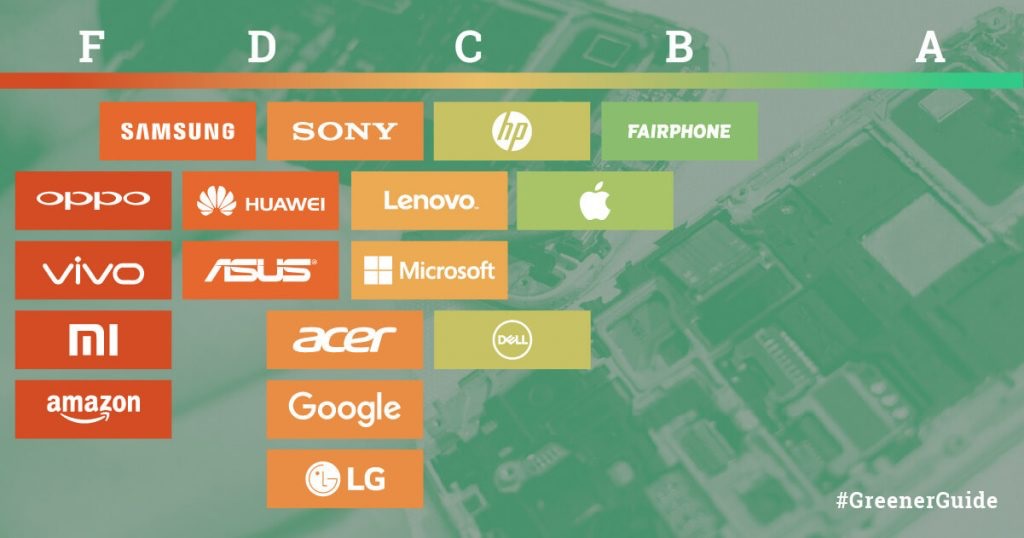
“With the relaunch of the Guide, we have focused on measuring elimination of hazardous chemicals from both the product itself and manufacturing.”
Samsung Trails Behind Apple in New
Greenpeace Guide to Greener Electronics
Average Grade Across 17 Companies Is D+,
Indicating Long Way to Go Toward Sustainable IT
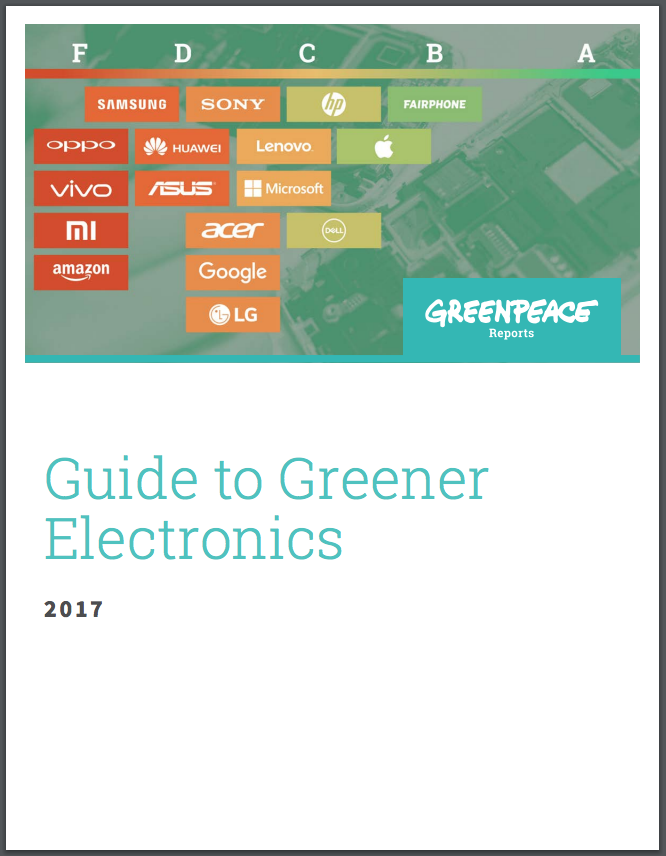 San Francisco, October 17, 2017 -The 2017 Guide to Greener Electronics (the Guide) was released today by Greenpeace USA, with rankings of seventeen of the world’s leading consumer electronics companies on sustainable manufacturing and design of IT products.
San Francisco, October 17, 2017 -The 2017 Guide to Greener Electronics (the Guide) was released today by Greenpeace USA, with rankings of seventeen of the world’s leading consumer electronics companies on sustainable manufacturing and design of IT products.
Companies were evaluated based on their transparency, commitment, performance and advocacy efforts in three critical areas: reduction of greenhouse gases through renewable energy; use of recycled materials; and elimination of hazardous chemicals.
“Tech companies claim to be at the forefront of innovation, but their supply chains are stuck in the Industrial Age. We know they can change. Rather than fueling climate change, IT companies need to show the way forward, just like Google and Apple have done with data centers run on renewables,” said Gary Cook, Senior IT Campaigner at Greenpeace USA.
The average grade across the 17 companies evaluated in the Guide was a D+, demonstrating that the sector as a whole has work to do to resolve supply chain impacts and improve product design. Fairphone, based in the Netherlands, scored best overall with a B, followed by Apple with a B-. Dell and HP follow Apple and Fairphone with a C+, while eleven companies, including Samsung, Huawei and Amazon, fall in the D and F range. The full list of rankings can be found here.
Despite its central position as both the largest manufacturer of smartphones and one of the largest suppliers of displays, Samsung’s manufacturing system relies heavily on fossil fuels. The company used more than 16,000 GWh of energy in 2016, with just 1% coming from renewables, for example.
Demand for consumer electronics continues to climb, with nearly 2 billion devices sold in 2016 alone. This drives demand for both finite mined materials and dirty energy. Meanwhile, e-waste is growing, due in part to the short lifespans of devices. The UN has estimated that e-waste globally will surpass 65 million tons in 2017–enough to bury San Francisco to 14 feet.
Key findings of the 2017 Guide to Greener Electronics include:
- Supply chain driving demand for dirty energy: Up to 80% of the carbon footprint of electronic devices occurs during manufacturing. While Google, Apple and other internet companies are making progress transitioning their data centers to renewable energy, nearly all of the companies in the Guide have yet to address the rapidly growing carbon footprint and dependence on dirty energy in their supply chains. Apple is the only company thus far that has committed to 100% renewable power for its supply chain.
- Planned obsolescence as design feature: Apple, Microsoft, and Samsung are among the companies moving in the wrong direction on sustainable product design – many of their latest products are difficult to repair or upgrade. HP, Dell, and Fairphone are the notable exceptions to this trend, producing a growing number of products that are repairable and upgradable.
- Poor supply chain transparency: Despite representing the majority of the environmental footprint for most electronic manufacturers, most companies publish little information on their suppliers, keeping their environmental footprint of their supply chain hidden from view. Of the 17 companies evaluated in the Guide, less than one third publishes a basic list of suppliers, keeping their supply chain hidden from view.
- Lack of transparency and monitoring of workplace chemicals: To protect worker health and safety, all companies need to identify and eliminate hazardous chemicals used in the production of their products, and improve worker health and safety due diligence. Apple, Dell, Google, HP, and Microsoft are the only companies in the Guide that publish their list of substances that must be restricted in the manufacturing of their devices (MRSL), including known hazards benzene, n-hexane, and toluene.
“It is clear the impacts of the linear take-make-waste business model employed by device manufacturers extend beyond the concerns of e-waste. We need to see greater ambition, more transparency, and follow-through from companies to address the environmental impacts of their enormous supply chains. The current model cannot be maintained,” said Cook.
Greenpeace is challenging the IT sector to take responsibility for its rapidly increasing footprint on the planet by:
- Shifting their supply chains to be renewably powered;
- Reducing the cycle of constant consumption of more minerals and other resources by designing long lasting products that use more recycled materials, and;
- Detox their products and their supply chain by finding alternatives to hazardous chemicals.
My Visit to the Naturepedic GOTS Certified Organic Mattress Factory
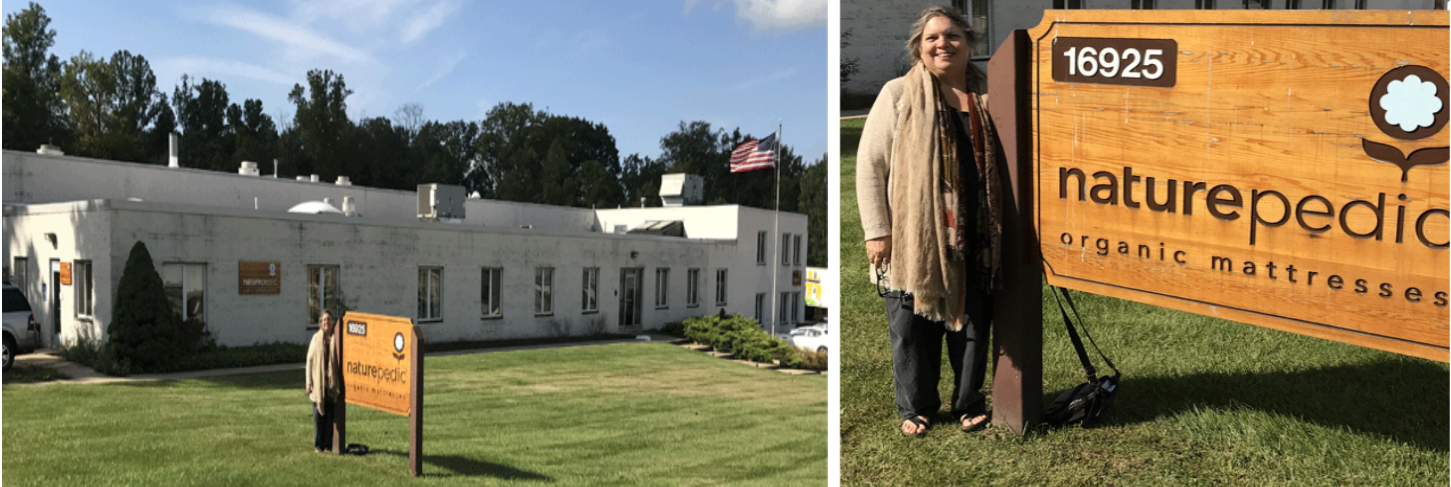
Read my post on the Naturepedic blog Understanding the Global Organic Textile Standard “Organic Mattress” Certification for more information about the GOTS standard and certification.
On 6 September 2017 I visited the Naturepedic mattress factory in Chagrin Falls, Ohio.
This charming village is in the countryside near Cleveland, built in the 1800s around a rushing waterfall in the center of town. The Naturepedic factory is just outside town in a quiet natural setting.
From the beginning, the Naturepedic factory was designed to be free from any toxic chemicals that might find their way into the mattress.
The mattresses are “handmade” in the sense that actual people are making the mattresses and bedding with their own hands. That said, there are also machines that make their work easier, such as sewing machines and heat sealers. There are also machines such as a vacuum machine that pulls all the air out of an innerspring mattress so it can be packed into a smaller box.
The concept of “aseembly line” is well used here, but instead of conveyer belts, products in progress are passed from person-to person, hand-to-hand. Some assembly steps are done by individuals, others by teams of people, such as two workers cutting a large sheet of fabric, their two pairs of scissors meeting in the middle.

This is typical of the spirit of cooperation that runs throughout the factory.
Many of the workers are local Amish, who begin at 6:30 AM. They asked to start work at this hour because they are already up feeding the animals on their farms at 4 AM and they wanted to get right to work on mattress-making. It made me smile to learn the day before my visit the entire factory closed for the afternoon so everyone could attend the wedding of one of the Amish workers.
As I toured the factory, over and over again I observed excellent relationships between everyone there, at every level. Many of the workers have been with the company for a number of years, some since the beginning. And their experience shines through in the quality of Naturepedic products.
I was introduced to and spoke with many of the workers. I was delighted to hear from many of them how happy they were to work at Naturepedic because they agreed with the basic purpose of the company. One worker told me that he was from a factory town that was full of toxic factories that smelled bad and produced toxic products. He much preferred working at Naturepedic. There just is a lot of love here, and dedication to incorporating their ideals and vision in everything they do.
Being a GOTS Certified Organic Mattress Manufacturer and Facility, Naturepedic must follow strict guidelines:
- All cotton, wool, and other fiber materials must be certified organic.
- Latex must be certified organic (if mattress is also GOLS certified).
- All mattress accessories must be approved by GOTS and must demonstrate that they meet GOTS non-toxic requirements.
- Lot tracking of all materials and components.
Inspectors then come to the factory to ensure the requirements for certification are met.
Inspections include tracking use of materials plus an accounting of all the material entering and leaving the system to ensure the certified materials were used.
Materials are stored in a warehouse next to the workspace where the mattresses and bedding are constructed.
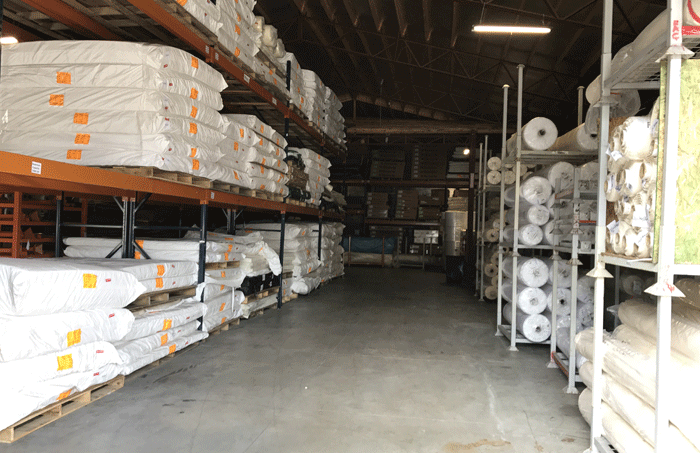
On the early autumn day when I visited, the doors were wide open and a clean breeze was blowing through. All materials are labeled and otherwise tracked for source, date, and anything else required by GOTS.
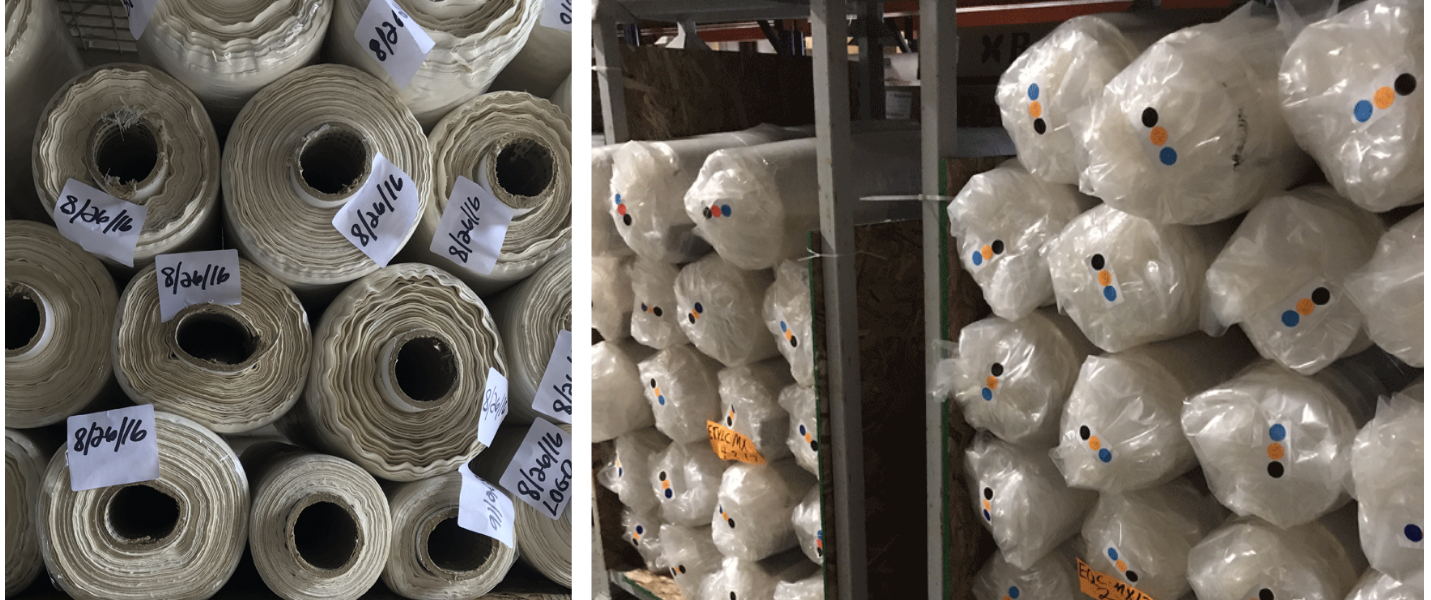
And at the end of the manufacturing process, a label is applied that lists all the materials used that shows the certifications.
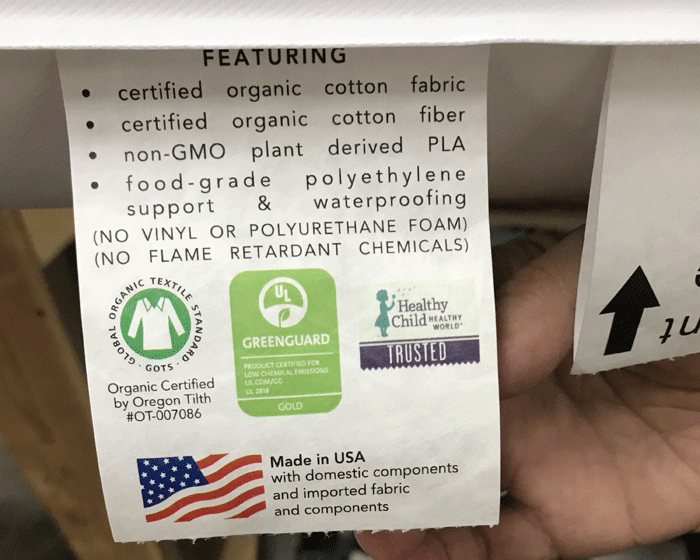
I spent the entire day at the factory and witnessed all the steps of making a mattress from start to finish—from the materials in the warehouse to the boxes being loaded on the shipping truck.
And at the end of the day I wished that every product in the world was manufactured like a Naturepedic mattress.
Public Health Officer Says “New Homes Burning Create Toxic Ash”
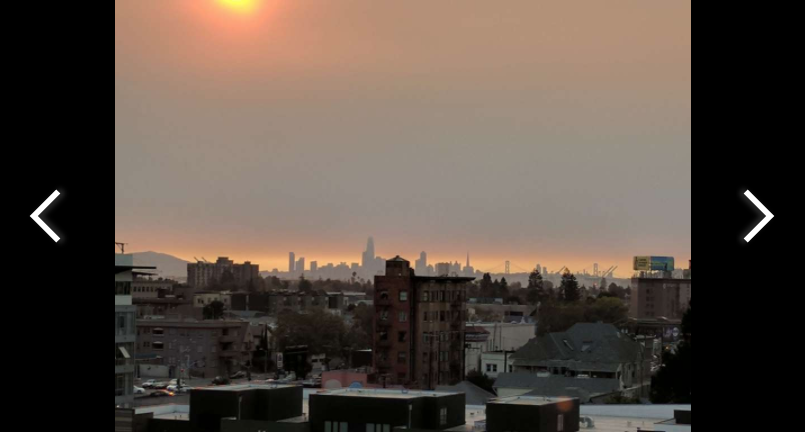
That’s the San Francisco skyline off in the distance. Click on the image to see an amazing collection of photos of our smoky skies here. When you click through the first image on the photo gallery is a woman with a scarf over her face. Just click on the right arrow to start viewing the smoky skies images.
After five days of fires in which more that 5000 homes and other buildings were destroyed near where I am living, Napa County Public Health Officer Dr. Karen Relucio declared a local health emergency throughout Napa County due to the hazardous waste and materials created by the fires.
We had been getting warnings about “unhealthy” levels of air quality daily since the fires started, but for the first time on Friday, those who have lost their homes were specifically told NOT to clean up fire debris because it was likely to be hazardous.
“The public should not attempt to clean up fire related debris,” Relucio said. “It is not safe. The ashes are toxic. They contain toxic materials.” She went on to note that the reason the ashes are toxics is “synthetic materials in new homes and household hazardous waste.”
I wish I could give you a link to her speech, but I can’t find it online. I saw it on tv news.
The ashes are toxic. The ashes are toxic. And the ashes from this fire are not limited to the debris on the ground. They are in the air all over the entire San Francisco Bay Area and beyond.
So when we’re breathing the air from smoky skies, it’s not just ash, it’s toxic ash the the public health department does not want us to even touch.
This is a serous public health issue.
If you live where there are smoky skies from burning buildings, it is imperative to stay in your home with an air filter and wear an appropriate mask when you are outdoors.
Choosing the Right Face Mask for Smokey Skies
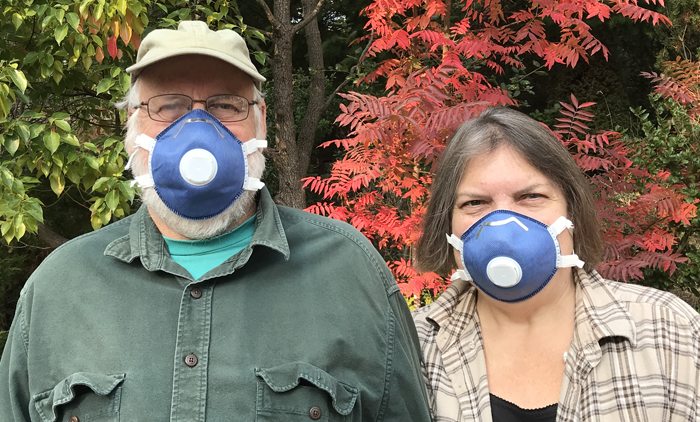
Debra and Larry wearing EnviroKlenz Face Masks
I’ve been living about 10 miles from one of the largest California fires ever for the past nine days now. It has produced a tremendous amount of smoke and ash all over the San Francisco Bay area, but especially right here where I am, near Santa Rosa.
There have been times when we literally could not breathe here without an air filter or face mask. At the end of the first day, Larry and I went to the beach to breathe, but by morning the smoke was there too.
It was very fortunate that I had an air filter in my storage unit. It has made it possible for us to breathe this past week, and I’m still sitting next to it as I write this today.
Smoke conditions in the outside air have been changing day-by-day depending on wind direction. I actually have never been in a situation where the air quality was so bad that I couldn’t breathe but one day last week I walked out the door and started coughing. We drove right to the hardware store to get a face mask. We had tried to buy facemasks a few days before but they were all sold out. That day they did have facemasks, but they were insufficient.
Facemasks are not a new subject for me. Many people with multiple chemical sensitivities (MCS) wear them all the time, as do some people who live in cities with air quality problems.
But since the need for a facemask is now imperative here, I decided to write about facemasks because there is a lot of misinformation in the news and in stores.
We all need to understand the health dangers present in smoky or polluted skies so we can then purchase the proper equipment to protect our lungs and our health
What You Need to Filter When There is Smoke in the Air
Smoke is made up of both particles and gasses. To choose a particle filter, you need to know about these pollutants.
Particles come in various sizes, which are measured in microns (also known as micrometers). Different types of particles have different sizes.
Particle pollution ratings are:
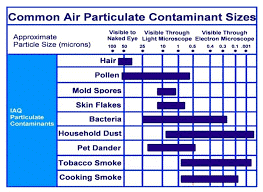
- PM10 : inhalable particles, with diameters that are generally 10 microns and smaller; and
- PM2.5 : fine inhalable particles, with diameters that are generally 2.5 microns and smaller.
Fine particles are the main cause of reduced visibility (haze) in the air. So if visibility is reduced in the air where you are, it’s full of fine particles.
Particles less than 10 microns in diameter pose the greatest health problems, because they can get deep into your lungs, and some may even get into your bloodstream. If the particles are toxic, then you run the risk of spreading toxic particles throughout your body when you breathe them. More on health and environmental effects of particulate matter.
Gasses are much simpler. In order to remove gasses from the air you are breathing you need a filter medium that will remove gasses, such as activated carbon or one of the new technologies that actually break down chemicals into natural elements.
Choosing the Right Face Mask
There are many face masks on the market, but they all fall into three basic types.
Medical Face Masks
 The most common face masks are medical face masks. My local CVS Pharmacy was giving these away for free, but they weren’t doing much good.
The most common face masks are medical face masks. My local CVS Pharmacy was giving these away for free, but they weren’t doing much good.
This is the kind of mask worn by dental and medical personnel to protect themselves from germs that might be carried by patients. It is also used in food service to keep food workers germs off food. Their purpose is to prevent the spread of disease.
They are made from non-woven fabric and filter paper.
If worn properly, a medical facemask will block large-particle droplets, splashes, sprays or splatter that may contain germs (viruses and bacteria), keeping them from reaching your mouth and nose. Facemasks can also help reduce exposure of your saliva and respiratory secretions to others. But medical face masks do not filter or block very small particles in the air that may be transmitted by coughs, sneezes or certain medical procedures. Facemasks also do not provide complete protection from germs and other contaminants because of the loose fit. If you want more protection from germs, use an N95 respirator (see below),
Medical face masks do not protect you from toxic particles or gasses found in smoke.
Face Masks for Particulates
Face masks for particulates will only filter PARTICLES, including dusts and biological micro-organisms. So they are good if you really need protection from germs or are in a situation where there is a lot of dust or smoke.
When you are choosing a particle mask, it needs to reduce exposure to particles down to the size particles you have in your air.
An N95 respirator is designed to block at least 95% of very small (0.3 micron) test particles when properly fitted. These are made from synthetic microfibers, adjustable metal nose clips and cushioning nose foam to provide a custom fit and a secure seal.
The N95 respirator are generally intended for occupational use, but the FDA has cleared certain N95 respirators (N95) for use by the general public. To work as expected, a N95 respirator requires a proper fit to your face. For information on proper fit, refer to the manufacturer’s instructions.
Our local news has been making a big point to only use “N95” particulate masks, however the Centers for Disease Control and Prevention (CDC) does not generally recommend facemasks and respirators for use in home or community settings. They recommend consulting with your health care provider for more information about when to use N95 Respirators at home or in the community.
There are a number of face masks of different types approved by the FDA (labels will say “NIOSH-approved”).
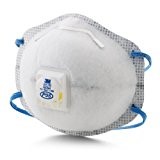 |
3M Particulate Masks See this page online for a wide selection of 3M N95 respirators. |
NOTE: N95 respirators are not designed for children or people with facial hair. Because a proper fit cannot be achieved on children and people with facial hair, the N95 respirator may not provide full protection.
NOTE: These masks may be made with all sorts of plastics and synthetic materials. Most are not suitable for people with MCS and some outgas air pollutants of their own.
There are quite a number of “N95” face masks on amazon in addition to the 3M models. Some descriptions don’t tell you what materials they are made from, others are decorative and don’t tell you the material used for filtration, some contain “an [unknown] antimicrobial agent that kills germs and lasts for the life of the mask.” Some are just cotton/polyester fabric with an antimicrobial…But none of these are FDA recommended.
If you need a dust mask, stick with a reputable brand that offers a mask that puts effectiveness first over style.
These masks will protect you from particles in smoke, but will NOT protect you from toxic gasses in smoke. They also need to be replaced frequently, depending on the concentration of particles in the air.
Face Masks for Smoke
We’ve been discussing the subject of face masks for smoke on this blog for quite some time, in the context of protection from exposure to cigarette smoke.
You can read the entire discussion at Q&A: Which Face Mask with Filter Cigarette Smoke?
The problem with smoke is that it contains toxic particles and toxic gasses and both need to be removed.
There are two face masks I am aware of that can protect users from smoke from any source and are designed to be safe for people with MCS.
 |
EnviroKlenz Breathing Mask
patented hospital-grade technology made from natural minerals neutralizes chemical gasses and particles |
|
 |
I Can Breathe Honeycomb Pollution Mask
Coconut shell activated carbon filter removes chemical gasses and particles |
Buy Here |
Respirators
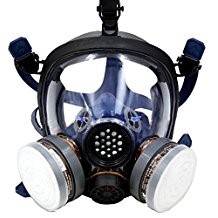 I just want to mention respirators. I’m not going to go into detail about them except to say that they exist. This is a post about face masks.
I just want to mention respirators. I’m not going to go into detail about them except to say that they exist. This is a post about face masks.
But I want you to know that heavy duty respirators do exist. They are especially designed for environments that have a high level of chemical gasses and are designed to hold replaceable cartridges.
Here is a list where you can see and compare some respirators.
Need Recommendation for Unscented Soap for Hand Washables

Question from Carol
Hi Debra,
What unscented soaps or detergents have canaries found tolerable to wash hosiery and hand washable delicates? I used to use the old formula ivory dish soap, but that has not been available for ages.
Debra’s Answer
Readers, what unscented soap for hand washables do you use and recommend?
How Do I Sanitize Rooms on Vacation?

Question from Zigzag
Hi Debra,
I just came back from a Airbnb/HomeAway/etc. mini-vacation. The place was heavenly and perfect in so many ways, but thoughts of germs, toxins, true cleanliness, etc. entered my head, not to be forgotten. What do you recommend to ensure adequate cleanliness but not over the top, vacation-spoiling obsessive?
Debra’s Answer
What about one of those products that use ultraviolet light in them.
Here are several different types:
Readers, any suggestions?
Biodegradable Plastic Bags

Question from Jim
My Most Dear Debra:
As I didn’t find it on your site nor the www, is the foul out-gassing smell of biodegradable as well as compostable plastic bags toxic?
I do thank you most kindly, Debra.
Debra’s Answer
Biodegradable plastics are the same petrochemical plastics engineered to break down more quickly.
So yes they could smell just as bad and be just as toxic.
Here’s an article that explains about bioplastics and biodegradable plastics.
Widespread Air Pollution From California “North Bay Firestorm” — And What I’m Doing to Protect My Health
On Sunday evening I went out to dinner with my family to a local restaurant. It was a pleasant evening and we sat on benches out in front of the restaurant quite comfortably while we waited for our table. When we walked out the door of the restaurant after dinner, there were gusts of wind so strong that I said, “A storm is coming!”
And then I remembered I was in California. In Florida, where I had been living for 15 years, this wind would mean I should go inside somewhere because very soon there would be a downpour with thunder and lightning. But this was California. There were few thunderstorms. But on Sunday night I was right. The winds created a firestorm.
Because of the winds, the fire spread quickly over a large area, with flying embers instantly igniting a dry landscape. Last I heard there are now 21 fires burning. There haven’t been enough firefighters. But firefighters and military from all over the country are being sent. Yesterday the firefighters numbered 8000. And still no containment.
While the winds carried the fires in the direction opposite from where I am living, the smoke from these fires has been terrible. I am only about 15 miles from the largest fires.
Outdoor Air Quality Warnings
Depending on where you live, you might not ever think about the quality of air outdoors. On my website, I focus on the quality of air inside homes and sources of unhealthy pollutants, but indoor air quality actually begins with outdoor air quality. I learned this many years ago when I and a friend created a nontoxic home for him in an area near downtown Oakland, California that had highly polluted outdoor air. Even though everything inside was perfectly nontoxic, he couldn’t live in the house because of the quality of the outdoor air. So I always start with the outdoor air quality when I am choosing a place to live.
But outdoor air quality is an issue in many places, so much so that our government has created the Air Quality Index to inform the public when outdoor air pollution reaches a level that can be harmful to health.
Local air quality affects how you live, how you breathe, and your health. Just like the weather, it can change from day to day and even hour to hour. So the US Environmental Protection Agency (EPA) and your local air quality management agency has made information on air quality as easy to understand as a weather report. And you’ll often see or hear this information as part of a weather report.
Air Quality Index
The Press Democrat newspaper reported “a monitor in Napa recorded an air quality index of 442 Monday morning, with a high of 292 in San Rafael.” By later in the day these areas measures 159 for Napa and 164 for San Rafael, showing the smoke moving away from the source fire and into the surrounding area.
On Monday at our house, which is about 15 miles from the fire, the sky was thick with smoke all day. Charred leaves were falling from the sky and ash was blowing continuously like snow. We stayed indoors as instructed but still the air smelled like smoke.
Larry and I went to sleep early but woke up around midnight. Larry was wheezing so badly that every exhale sounded like kittens mewing. I felt like I soon was not going to be able to breathe. With my interest in indoor air quality I always felt like even if the indoor air pollution was bad, I could always go outside and breathe. But now there was no clean air outside to breathe.
We got out of bed and drove for a half hour to Bodega, which is right on the Pacific Ocean. We opened all the windows of the car and breathed deeply the clean air. Fortunately, we were able to find a room at a lodge and could sleep through the night. But by morning the smoke had reached the ocean too.
This was now Tueday morning. We checked the television and found that the entire San Francisco Bay Area had the UNHEALTHY air index. We would have to drive for hours to get into clean air.
But our area is not the only place in California with smoke from wildfires. Cal Fire tracks all the fires in the state of California. Here’s the current map:

The Chemical Composition of Smoke
The exact composition of any sample of smoke depends on the material that is being burned. But in general, smoke—whether it comes from a cigarette or a house fire—is made up of particles and gasses. The type and amount of particles and gasses in smoke varies depending on what is burning, how much oxygen is available, and the burn temperature.
Particles are irritating, but gasses can be toxic.
I mention this because I am seeing people walking around wearing particle masks, which protect their lungs from particles, but not gasses.
CHEMICAL COMPOSITION OF WOOD SMOKE
| carbon monoxide | methane |
| VOCs* (C2-C7) | aldehydes |
| substituted furans | benzene |
| alkyl benzenes | acetic acid |
| formic acid | nitrogen oxides |
| sulfur dioxide | methyl chloride |
| napthalene | substituted napthalenes |
| oxygenated monoaromatics | total particle mass |
| particulate organic carbon | oxygenated PAHs |
| Individual PAHs | chlorinated dioxins |
| normal alkanes (C24-C30) | sodium |
| magnesium | aluminum |
| silicon | sulfur |
| chlorine | potassium |
| calcium | titanium |
| vanadium | chromium |
| manganese | iron |
| nickel | copper |
| zinc | bromine |
| lead |
The Health Effects of Breathing Smoke
According to the New York State Department of Health
Exposure to high levels of smoke should be avoided. Individuals are advised to limit their physical exertion if exposure to high levels of smoke cannot be avoided. Individuals with cardiovascular or respiratory conditions (e.g., asthma), fetuses, infants, young children, and the elderly may be more vulnerable to the health effects of smoke exposure.
Inhaling smoke for a short time can cause immediate (acute) effects. Smoke is irritating to the eyes, nose, and throat, and its odor may be nauseating. Studies have shown that some people exposed to heavy smoke have temporary changes in lung function, which makes breathing more difficult. Two of the major agents in smoke that can cause health effects are carbon monoxide gas and very small particles (fine particles, or PM2.5 ). These particles are two and one half (2.5) microns or less in size (25,400 microns equal an inch) and individual particles are too small to be seen with the naked eye.
Inhaling carbon monoxide decreases the body’s oxygen supply. This can cause headaches, reduce alertness, and aggravate a heart condition known as angina. Fine particles are able to travel deeply into the respiratory tract, reaching the lungs. Inhaling fine particles can cause a variety of health effects, including respiratory irritation and shortness of breath, and can worsen medical conditions such as asthma and heart disease. During increased physical exertion, cardiovascular effects can be worsened by exposure to carbon monoxide and particulate matter. Once exposure stops, symptoms from inhaling carbon monoxide or fine particles generally diminish, but may last for a couple of days.
Read also AIR NOW: How Smoke from Fires Can Affect Your Health
How to Protect Yourself From Smoke if You Live Near a Fire
On the first day of the fires, TV news shows told us tp stay indoors to avoid the smoke outdoors. But this doesn’t seem like enough to me.
Here are more things you can do:
1. If you can, drive somewhere else outside of the smoky area.
2. Get a face mask that filters both particles and gasses. Read this about choosing the proper face mask and how to use it correctly.
3. Run your HVAC system to filter air from outside. Recirculating air in your home for too long can reduce oxygen levels. Keep a supply of HVAC filters on hand so you can change them as needed. Check the filter daily to see if it needs to be changed while the outdoor air is smoky.
4. Use an air filter that filters out both particles and gasses.
How to Relieve Symptoms Caused by Smoke Inhalation
First, just drink a lot of water. I have a bottle of water with me and I’m sipping it all day. Smoke will really dry your body out, and your body needs even more liquid at this time.
A major problem from smoke inhalation is all the particles in the air clog the cilia, little “oars” in the respiratory tract, sinuses and lungs that move foreign materials through the system.
To clear the cilia, drink hot liquids. Hot liquids stimulate the cilia to move and this in turn can help get the mucus moving so you can swallow it or cough it up. This removes the mucus containing the contaminants from your respiratory system, where it can do further damage.
If you really are having trouble breathing, go to your nearest emergency medical facility. There they can give you oxygen, which is the standard treatment for smoke inhalation.
Larry and I did drive away from the smokey area when it became clear we were starting to have breathing difficulties. But then when the smoke came to where we were, we drove back to Sebastopol and got my air filter out of the storage locker and brought it home and set it up. And we both were able to breathe comfortably indoors and haven’t had any problems since.
PRODUCTS THAT CAN HELP REDUCE SMOKE INHALATION
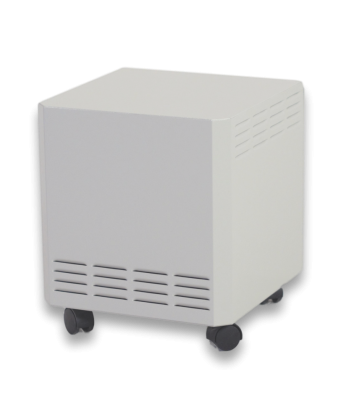 |
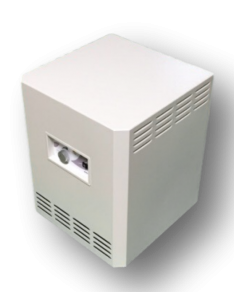 |
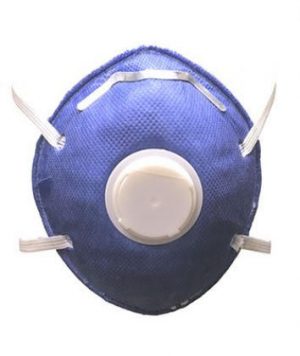 |
| EnviroKlenz Mobile Air System |
EnviroKlenz Mobile Unit UV Model |
EnviroKlenz Breathing Mask |
| HEPA filter for particles plus patenting hospital-grade technology that removes and neutralizes VOCs, bad odors, and fragrances. | EnviroKlenz Mobile Air System plus a UV light to inhibit the growth of captured bacteria, molds, and viruses | Removes both particles and toxic gasses that are present in smoke |
| More.. | More.. | More.. |

